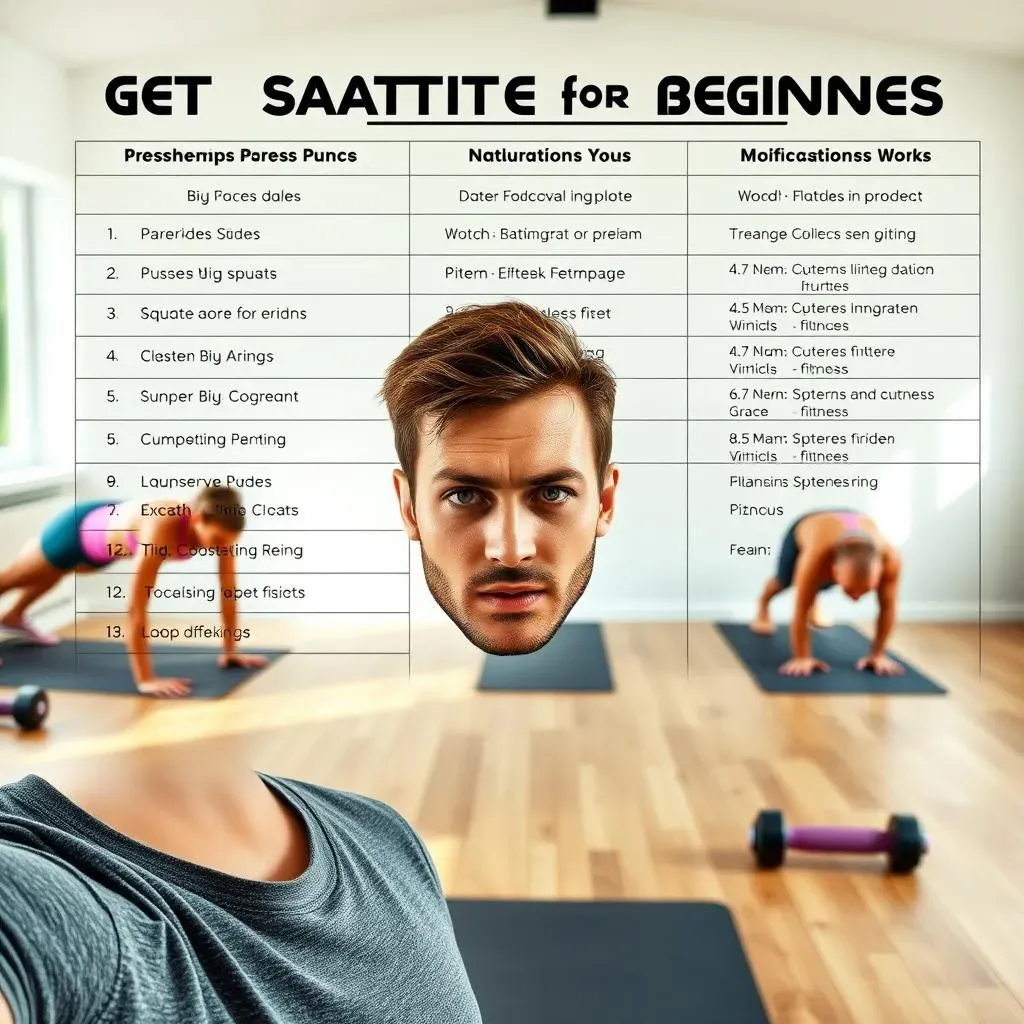Table of Contents
Are you looking for a way to transform your body without the need for expensive gym memberships or equipment? Look no further than calisthenics exercises. Calisthenics is a form of strength training that utilizes your body weight as resistance to perform multi-joint, compound movements. This effective and efficient workout can be done anywhere, making it perfect for those with busy schedules or limited access to gym facilities. In this article, we will delve into the world of calisthenics exercises, exploring their benefits, basic and advanced movements, and provide tips on how to create a balanced fitness plan. Whether you're a beginner or an advanced athlete, calisthenics exercises offer a holistic approach to fitness, improving functional strength, flexibility, and mobility while building lean muscle mass. Join us as we uncover the power of calisthenics and discover how you can unlock a stronger, leaner you with these powerful bodyweight workouts.
What are Calisthenics Exercises and Their Benefits

What are Calisthenics Exercises and Their Benefits
Calisthenics exercises are a form of strength training that uses your body weight as resistance to build strength, flexibility, and coordination. This type of exercise has been around for centuries, with ancient Greeks and Romans using bodyweight exercises to prepare for sports and warfare. Today, calisthenics is a popular form of exercise that requires minimal equipment, making it accessible to anyone, anywhere.
The benefits of calisthenics exercises are numerous. They improve functional strength, which is the ability to perform daily tasks and movements with ease. Calisthenics also increases flexibility and mobility, allowing for a greater range of motion and reducing the risk of injury. Additionally, calisthenics workouts are effective for building lean muscle mass, which can help boost metabolism and burn fat. Perhaps one of the most significant advantages of calisthenics is its convenience – you can do these exercises anywhere, whether at home, in the park, or while traveling.
Benefit | Description |
|---|---|
Improved Functional Strength | Enhances ability to perform daily tasks and movements |
Increased Flexibility and Mobility | Allows for a greater range of motion and reduces injury risk |
Lean Muscle Mass | Boosts metabolism and burns fat |
Calisthenics exercises are also a great way to improve posture, balance, and overall physical fitness. They can be modified to suit different fitness levels, from beginner to advanced, making them an excellent option for people of all ages and abilities. Whether you're looking to lose weight, build strength, or simply improve your overall health, calisthenics exercises are an effective and efficient way to achieve your fitness goals.
- Press-ups: Works the chest, shoulders, and triceps
- Pull-ups: Targets the back, shoulders, and arms
- Squats: Strengthens the legs, glutes, and core
- Planks: Engages the core, improves posture and balance
Calisthenics Exercises for Beginners: Getting Started

Calisthenics Exercises for Beginners: Getting Started
Congratulations on taking the first step towards starting your calisthenics journey! As a beginner, it's essential to begin with basic exercises that will help you build a strong foundation. Calisthenics exercises for beginners should focus on developing overall strength, flexibility, and coordination. Start with simple movements that work multiple muscle groups at once, such as press-ups, squats, and planks.
Press-ups are an excellent exercise for beginners, targeting the chest, shoulders, and triceps. Squats work the legs, glutes, and core, while planks engage the core, improve posture, and enhance balance. These exercises are not only effective but also easy to learn and modify according to your fitness level. For example, if you're new to press-ups, you can start with knee press-ups or incline press-ups until you build enough strength to perform a standard press-up.
Exercise | Muscle Groups Worked | Modification for Beginners |
|---|---|---|
Press-ups | Chest, Shoulders, Triceps | Knee Press-ups or Incline Press-ups |
Squats | Legs, Glutes, Core | Bodyweight Squats or Sumo Squats |
Planks | Core, Shoulders, Back | Knee Plank or Wall Plank |
Remember, the key to progressing in calisthenics is to start slow and gradually increase the difficulty of your workouts. Begin with shorter sets and gradually increase the number of repetitions as you build strength and endurance. It's also crucial to focus on proper form and technique to avoid injury and get the most out of each exercise.
- Start with 3 sets of 8-12 repetitions for each exercise
- Warm up before each workout with 5-10 minutes of cardio and stretching
- Listen to your body and rest when needed
- Stay hydrated and fuel your body with a balanced diet
Advanced Calisthenics Exercises: Taking Your Workout to the Next Level

Advanced Calisthenics Exercises: Taking Your Workout to the Next Level
Once you've mastered the basic calisthenics exercises, it's time to take your workout to the next level with advanced movements. These exercises will challenge your strength, endurance, and coordination, helping you achieve greater gains in your fitness journey. Advanced calisthenics exercises include wide-grip pull-ups, dips, pistol squats, and muscle-ups. Each of these exercises targets multiple muscle groups, ensuring a full-body workout that will push you to your limits.
Wide-grip pull-ups are an advanced version of the traditional pull-up, requiring more strength and control. They work the latissimus dorsi, biceps, and upper back muscles. Dips, on the other hand, target the triceps, anterior deltoids, and chest muscles. Pistol squats are a challenging exercise that requires balance, strength, and flexibility, working the legs, glutes, and core. Muscle-ups are one of the most advanced calisthenics exercises, requiring immense strength, endurance, and technique to transition from a pull-up to a dip.
Exercise | Muscle Groups Worked | Difficulty Level |
|---|---|---|
Wide-Grip Pull-ups | Latissimus Dorsi, Biceps, Upper Back | Advanced |
Dips | Triceps, Anterior Deltoids, Chest | Advanced |
Pistol Squats | Legs, Glutes, Core | Expert |
Muscle-ups | Full Body | Expert |
To incorporate these advanced exercises into your workout routine, start by adding one or two to your existing regimen. Gradually increase the number of repetitions and sets as you build strength and endurance. It's also essential to focus on proper form and technique to avoid injury and get the most out of each exercise.
- Begin with 3 sets of 8-12 repetitions for each advanced exercise
- Warm up with 10-15 minutes of cardio and dynamic stretching
- Focus on proper form and technique
- Engage your core and maintain control throughout each movement
Calisthenics Workout Routine: Creating a Balanced Fitness Plan

Calisthenics Workout Routine: Creating a Balanced Fitness Plan
Creating a Balanced Fitness Plan with Calisthenics Exercises
A well-structured calisthenics workout routine is essential for achieving your fitness goals. Whether you're a beginner or an advanced athlete, it's crucial to create a balanced plan that targets all major muscle groups and includes a mix of exercises for strength, flexibility, and cardiovascular endurance. A balanced calisthenics workout should include a variety of exercises that work multiple muscle groups at once, such as press-ups, pull-ups, squats, and lunges.
When creating your workout routine, consider starting with compound exercises like press-ups, squats, and lunges, which work multiple muscle groups simultaneously. These exercises are not only effective but also efficient, allowing you to get a full-body workout in a shorter amount of time. As you progress, you can add more isolation exercises like dips, pull-ups, and planks to target specific muscle groups.
Exercise | Muscle Groups Worked | Sets and Repetitions |
|---|---|---|
Press-ups | Chest, Shoulders, Triceps | 3 sets of 12-15 reps |
Squats | Legs, Glutes, Core | 3 sets of 12-15 reps |
Lunges | Legs, Glutes, Core | 3 sets of 12-15 reps (per leg) |
In addition to strength training, it's essential to incorporate flexibility and mobility exercises into your routine. Calisthenics exercises like planks, leg raises, and wall sits can help improve your flexibility and balance. Cardiovascular endurance is also crucial, and calisthenics exercises like burpees, jump squats, and mountain climbers can get your heart rate up and burn calories.
- Warm up with 5-10 minutes of cardio and dynamic stretching
- Include 2-3 compound exercises per workout
- Add 1-2 isolation exercises to target specific muscle groups
- Cool down with 5-10 minutes of static stretching
As you progress in your calisthenics journey, it's essential to continue challenging yourself with more advanced exercises and increasing the intensity of your workouts. Investing in equipment like a home pull-up bar, gymnastics rings, and resistance bands can help you take your workouts to the next level. Resistance bands, for example, can add an extra level of challenge to your exercises, while gymnastics rings provide an unstable surface that engages your core and improves your overall strength.
A well-structured calisthenics workout routine should also include active recovery days to allow your muscles time to rest and rebuild. On these days, you can engage in light cardio activities like jogging, cycling, or swimming, which can help promote blood flow and aid in the recovery process. Remember to listen to your body and only do what feels comfortable and safe.
Equipment | Benefits | Recommended Use |
|---|---|---|
Home Pull-up Bar | Convenient and space-efficient | 3 sets of 8-12 pull-ups |
Gymnastics Rings | Engages core and improves overall strength | 3 sets of 8-12 ring dips |
Resistance Bands | Adds challenge to exercises | 3 sets of 12-15 banded press-ups |
By incorporating these tips and equipment into your calisthenics workout routine, you'll be well on your way to achieving a balanced fitness plan that improves your overall strength, flexibility, and cardiovascular endurance.
- Invest in equipment that challenges you and adds variety to your workouts
- Incorporate active recovery days to aid in muscle recovery
- Listen to your body and only do what feels comfortable and safe
Maximizing the Effects of Calisthenics Exercises: Tips and Tricks

Maximizing the Effects of Calisthenics Exercises: Tips and Tricks
Optimizing Your Calisthenics Workout Routine
To maximize the effects of calisthenics exercises, it's essential to optimize your workout routine. This includes creating a balanced routine that targets all major muscle groups, incorporating variety to avoid plateaus, and gradually increasing the intensity of your workouts. A well-structured routine should include a mix of compound exercises like press-ups, squats, and lunges, as well as isolation exercises like dips, pull-ups, and planks.
Another crucial aspect of maximizing the effects of calisthenics is progressive overload. This involves gradually increasing the difficulty of your workouts by adding more repetitions, sets, or decreasing rest time between sets. Progressive overload challenges your muscles, forcing them to adapt and grow stronger. For example, if you're doing press-ups, you can increase the number of repetitions each week or switch to diamond press-ups, decline press-ups, or single-arm press-ups to increase the challenge.
Exercise | Progressive Overload Method | Recommended Sets and Reps |
|---|---|---|
Press-ups | Increase reps by 2-3 each week | 3 sets of 12-15 reps |
Squats | Decrease rest time between sets | 3 sets of 12-15 reps |
Lunges | Increase sets by 1 each week | 3 sets of 12-15 reps (per leg) |
- Increase repetitions by 2-3 each week
- Decrease rest time between sets by 15-30 seconds
- Increase sets by 1 each week
- Modify exercises to make them more challenging
Nutrition and Recovery Strategies for Calisthenics
Nutrition and recovery are just as important as the exercises themselves when it comes to maximizing the effects of calisthenics. Adequate nutrition provides your muscles with the necessary fuel to grow and recover, while proper recovery strategies help your body repair and adapt to the demands of your workouts. Focus on consuming a balanced diet that includes protein-rich foods, complex carbohydrates, and healthy fats. Aim to eat 1.6-2.2 grams of protein per kilogram of body weight daily to support muscle growth and recovery.
In addition to nutrition, recovery strategies like stretching, foam rolling, and self-myofascial release can help reduce muscle soreness and improve flexibility. Getting enough sleep is also crucial, as it allows your muscles to recover and rebuild. Aim for 7-9 hours of sleep each night and take rest days as needed to allow your body time to recover.
Nutrient | Recommended Daily Intake | Food Sources |
|---|---|---|
Protein | 1.6-2.2 grams/kg body weight | Chicken, Fish, Eggs, Legumes |
Complex Carbohydrates | 2-3 grams/kg body weight | Brown Rice, Quinoa, Whole Wheat Bread, Fruits and Vegetables |
Healthy Fats | 0.5-1 gram/kg body weight | Nuts, Seeds, Avocados, Olive Oil |
- Eat a balanced diet with protein, complex carbohydrates, and healthy fats
- Stay hydrated by drinking plenty of water
- Get 7-9 hours of sleep each night
- Take rest days as needed
Conclusion: Unlocking the Full Potential of Calisthenics Exercises
In conclusion, calisthenics exercises offer a versatile and effective way to achieve overall fitness and well-being. By incorporating these bodyweight movements into your workout routine, you can improve your strength, flexibility, and mobility while enhancing your mental toughness and discipline. Whether you're a fitness enthusiast or just starting out, calisthenics exercises provide a journey of self-discovery and transformation. Remember to start slow, progress gradually, and listen to your body. With persistence and dedication, you can unlock the full potential of calisthenics exercises and achieve a stronger, leaner, and healthier you. Visit calisthenicsfrance.com for more resources and guidance on your calisthenics journey.
